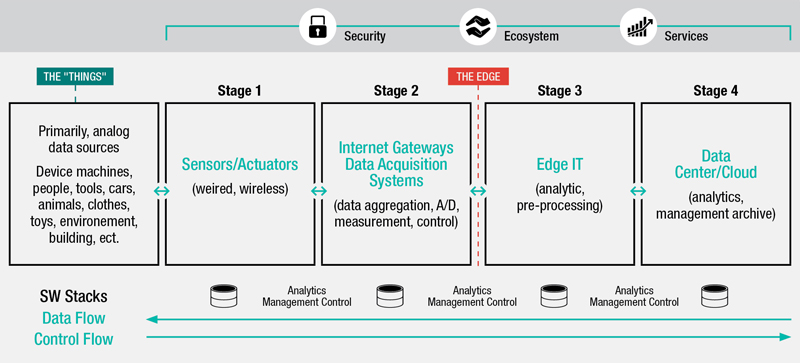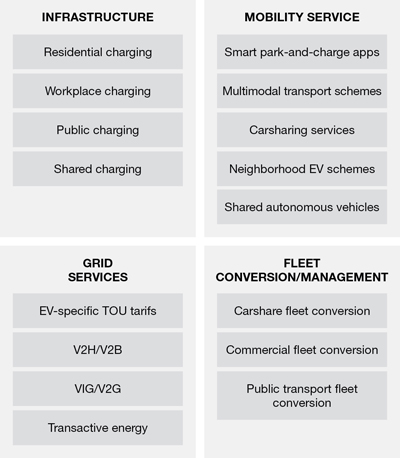At times it seems like the entire world is abuzz over IoT (“Internet of Things”), and there is no mistaking that this is a game changer for many industries and indeed in our day-to-day lives. At its core, IoT is a digital infrastructure comprised of physical objects with a (usually) robust communications layer enabling a wide variety services and applications that were not possible, or even thought of, prior to the IoT revolution that we are all living in today.
For utilities, this is most prominently known as the “smart grid” and is creating a new operating and business model that is based on the “digital utility”, where the IoT infrastructure is basically overlaid across the utility enterprise. The changes facilitated by the digital utility range from modest improvements, to existing processes and services, to reinvention of business functions, to entirely new programs and offerings. This market is estimated to grow to $US30 billion globally by 2025, according to GTM Research, so this continues to be a significant and growing market. The key to success with this pricey proposition is how well a utility transitions from a focus on the infrastructure to one of delivering value, two very different skill sets.
Moving from Building Infrastructure to Building Value
The progress of the digital utility is evolving from an era of building an infrastructure to one that is building and delivering value for customer, employees, and other stakeholders.
Figure 1 will help us understand this evolution from infrastructure to value. Stages 1 and 2 are arguably all about the buildout of the architecture. Stages 3 and 4 are where the value is realized and are all about data and analytics. Most large utilities are in stages 3 and 4, so bring on the value!
THE 4 STAGES IoT SOLUTIONS ARCHITECTURE

Figure 1. IoT Architecture. (Source: TechBeacon)
At the core of this movement to value is a utility’s ability to leverage the data that is a result of this intelligent infrastructure into meaningful analytics, and this in itself is an evolution. Many in the industry remember the early days of the smart grid and its relatively short list of use cases that were used to build the business case for these massive investments, some of which approached $US1 billion. Comparing this to today’s use cases that take advantage of advanced analytics, third-party data sources, and some very creative people one can see how far the industry has come in less than a decade.
So, what does delivering value via a digital utility look like? A glimpse into some leading use cases provides some ideas of how this is happening today and will accelerate in the future.
The Great Potential and the Ugly Truth of Customers
The utility industry tends to be pretty insular. We all tend to get excited about new technologies and how the latest regulatory ruling will impact the industry. But guess what? Nobody else cares; that is, nobody else cares until their lights go out or if they see a leap in their bill. One industry researcher estimates that the average utility customer spends about eight minutes per year thinking about his or her utility. So while the utility has millions of captive customers, the industry does not have a great track record of engaging these customers.
That’s the bad news. The good news is that this is changing, and the digital utility is what is making this all possible. Examples include:
- Better Offers: With a deeper knowledge of each customer that can include payment history, energy usage patterns, and the inclusion of third-party data utilities can provide mass customization tailored to the needs of specific customers. This can include different pricing programs, energy efficiency offers, and more.
- Saving Money: The combination of increased and volatile fuel prices typically creates higher energy costs for consumers if they continue to practice business as usual with their energy usage practices. The utility is uniquely positioned to be the consumer’s champion in making special programs available that can save their customers money. As utilities start moving towards time-of-use pricing, how well a utility educates its customers on their energy choices can be the difference between success for both the utility and its customers, and failure, which can (and predictably will) get ugly as utility bills increase continuously over time.
- Personal Responsibility: A growing portion of the population is concerned about the environment. Many utilities already have options for customers to opt in to a variety of green energy programs. Watch for these to grow in popularity as utilities become “part of the solution” in the face of competition (roof top solar being chief among these competitive forces). The EVs are coming!
Not really. They are already here, and the growth potential is staggering. Navigant Research estimates that annual demand from EVs for electricity could exceed 400 TWh by 2035 (that’s 400,000 GWh!). Selling all of these electrons could very well be the best growth opportunity in decades for an industry that has flat to declining revenues. Austin Energy estimates that each new EV in their service territory represents a potential $400/year in new revenue. That doesn’t sound like much until you learn that they are expecting up to 300,000 new EVs in their territory within the next 10 years. That’s $120 million in new annual revenue…game changer!
Figure 2 shows the different “business model lanes” for electric utilities as EVs proliferate the landscape. These use cases require a finely tuned data and analytics infrastructure with accompanying business processes to be successful. For instance, all of the various charging scenarios will require the tracking and billing of all of those electrons, many of which will also have special rates and time slots to accommodate grid management and different customer requirements. Similarly, mobility services like smart park-and-charge or shared autonomous vehicles will be facilitated by a strong underpinning of data and analytics to track users, manage billing, and even to schedule maintenance.

Figure 2. EV Business Model Lanes (Source: Navigant Research).
Distributed Resources is the Mother of Invention
The growth of Distributed Energy Resources (DERs) is where things are getting really interesting for the electric utility industry. The introduction and growth of rooftop solar, energy storage, microgrids, and other technologies are creating challenges across the entire utility enterprise, impacting financial, customer, and operational success in ways that were unanticipated just a few years ago.
This new operating paradigm is creating the need for radical changes to the traditional value chain for how a utility operates, particularly, at the distribution grid level. Managing peaks, addressing reliability, connecting DERs, and enabling the marketing and selling of energy across and to/from non-traditional entities all makeup what will be a very different role for every utility.
Examples of the scope if these changes include (according to GTM Research):
- The peak demand impact of DERs and connected devices will grow from 46.4 GW in 2017 to 104.2 GW in 2023.
- More than100 utilities have established some basic form of a marketplace for DERs, suggesting that the role of a Distribution System Operator (“DSO”) is on the horizon.
The changes in the electric utility industry demonstrated here are really just the beginning. The role of the electric utility might be practically unrecognizable in as little as five years. We are all starting to hear that the utility industry is becoming one where the data is becoming as important as the electrons. We might even call this a digital utility.
 Mike Smith is the principal industry consultant with the utilities group at SAS Institute. He is a 28-year veteran of the utility industry, having started as an analyst covering SCADA systems in 1990, and since then, leading numerous industry initiatives including founding the “smart grid” market’s first dedicated publication in 1995 and co-founding the Utility Analytics Institute in 2012. He is a graduate of San Jose State University (BA, economics) and is a veteran of the US Army (Captain, Infantry). He can be reached at mikef.smith@sas.com.
Mike Smith is the principal industry consultant with the utilities group at SAS Institute. He is a 28-year veteran of the utility industry, having started as an analyst covering SCADA systems in 1990, and since then, leading numerous industry initiatives including founding the “smart grid” market’s first dedicated publication in 1995 and co-founding the Utility Analytics Institute in 2012. He is a graduate of San Jose State University (BA, economics) and is a veteran of the US Army (Captain, Infantry). He can be reached at mikef.smith@sas.com.

